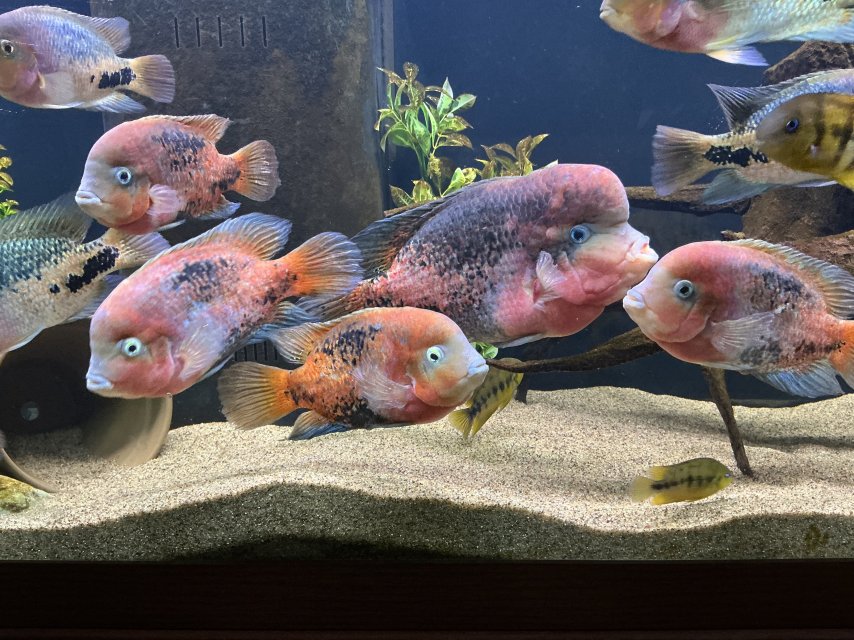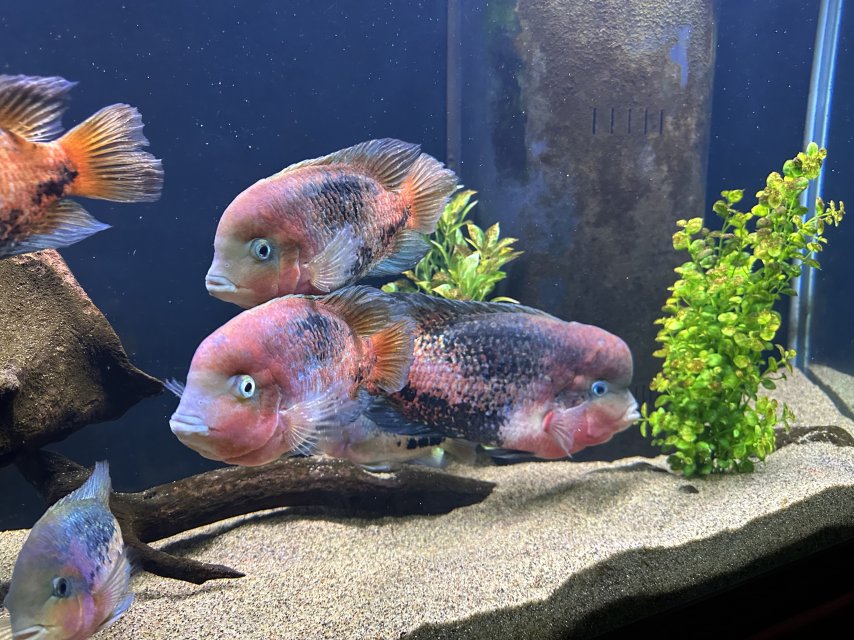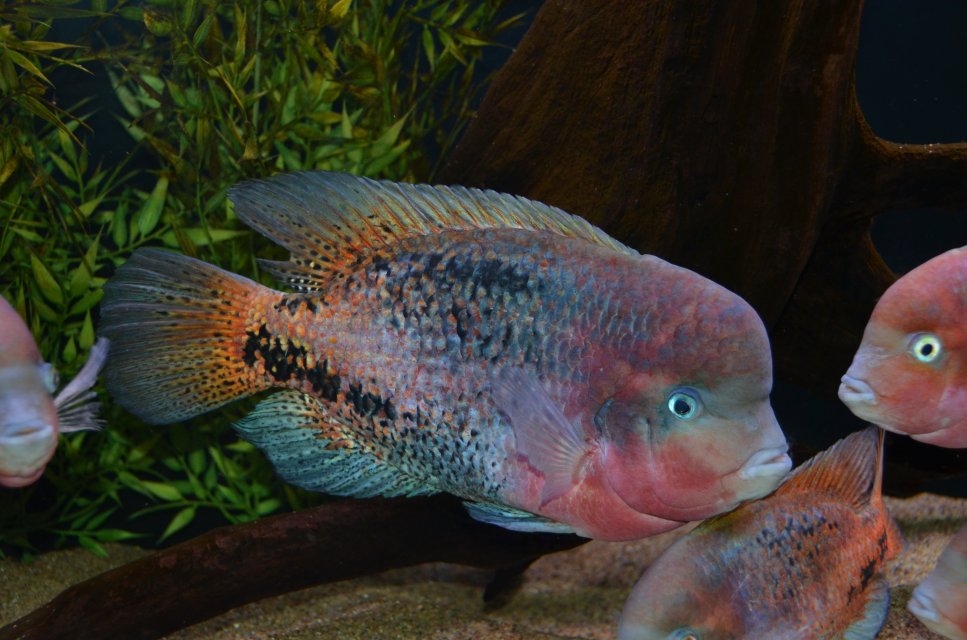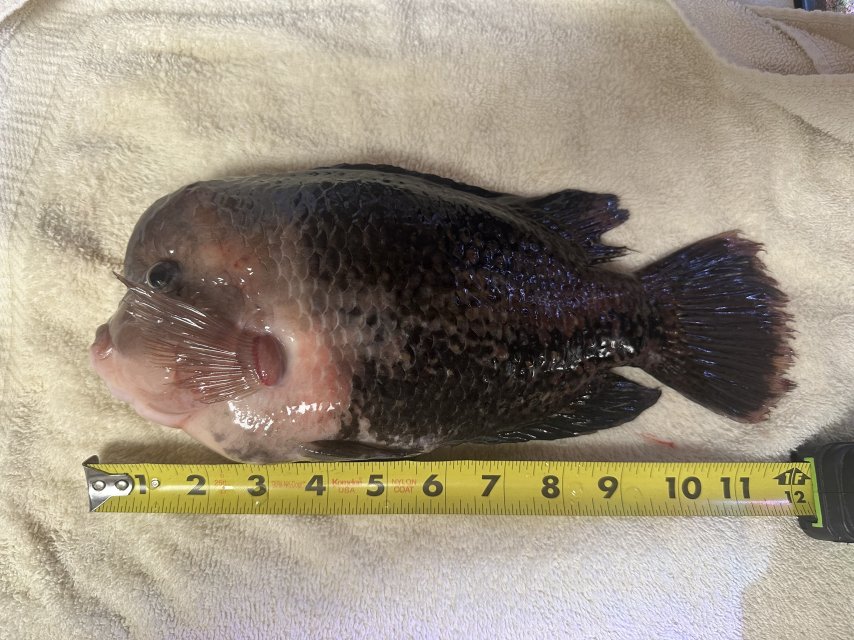- Have you tested your water?
- Yes
- If yes, what is your ammonia?
- 0
- If yes, what is your nitrite?
- 0
- If yes, what is your nitrate?
- 10
- If I did not test my water...
- ...I recognize that I will likely be asked to do a test, and that water tests are critical for solving freshwater health problems.
- Do you do water changes?
- Yes
- What percentage of water do you change?
- 91-100%
- How frequently do you change your water?
- Every week
- If I do not change my water...
- ...I recognize that I will likely be recommended to do a water change, and water changes are critical for preventing future freshwater health problems.
I am definitely at a loss with this one. I have a 7 year old group of Dan’s Vieja melurua(and few of their offspring that survived) in a 265g with a 75g sump. The largest male is right around 12” and is the only fish that has ever had any symptoms. The base of his pectoral fins are red, slightly darker pigmentation, and his breathing rate is slightly elevated but has been active and eating normally until the last few days but his appetite has decreased. He will still grab a Northfin Tropical stick or a Algaemax pellet or two but his appetite has definitely diminished. I first noticed this the first week of January of this year. The nitrates hover right around 20ppm and my typical schedule is a 80% water change every two-three days, PH is 8.0, and TDS is around 280. I have over the last 9 months run a full course of Maracyn and Maracyn 2 with no effect. I gave them a 90 day break then ran a full course of nitrofurizone with no effect. I gave them another 90 day break with a full course of Kanaplex/Metroplex and still no effect. Since this has been going on I’ve been doing 75% water changes every one-two days to keep nitrates well below 10ppm. So I would certainly appreciate any other ideas as I’m definitely at a loss.
January 2025

June 2025

This was in December before this started to occur for comparison.

January 2025

June 2025

This was in December before this started to occur for comparison.





